|
Seventh Evelyn Hursey and Khwaja Gulam-us Saiyidain Memorial Lecture Delivered at Delhi School of Social Work in-1985 The Context
This is an introductory report of an ecological movement going on in the Western Ghat region of Karnataka. An attempt is made to present the movement in a historical context. This report draws upon the experience of local people. The Western Ghat mountain range from Gujarat to Kerala plays a crucial role in maintaining the environmental stability of the Deccan plateau. Important rivers like Krishna, Bhima, Cauvery and Tungabhadra originate from the thick forests of Western Ghats. The whole Western Ghat belt forms the catchment area of important rivers of South India. The forests of this region are known as tropical forests, which bring rain by intercepting monsoon winds. Amidst the green hills, there are small patches of cultivable land. The area is famous for black-pepper, cardamom, arecanut (Supari), coffee and banana. The forests have proved to be the perennial source of water to the region and have also made possible continuous supply of green manure. The total self-reliant life style of people has thus remained integrated with nature Thousands of malnourished children suffer in silence. And no one cares Something is not always better than nothing. Hungry little ones would rather sleep on an empty stomach than gulp down inedible ‘packet food’.
The last time Mahadevi, 3, braved a mouthful of the disable bath (a rice dish) distributed at the anganvadi In Appanadodi, 25km from Raichur, Karnataka, she cried all night. “She had a terrible stomach upset,” says her mother, Narasamma. Male Participation In Domestic Responsibilities Among The Dual Earning Families In Solapur City10/10/2017 The objective of this study is to examine how the men are helping their wives in the day-to-day domestic activities. In this context an attempt is made to explain how far the men belonging to dual earning families are involved in domestic responsibilities.
India is a culturally and linguistically diverse country where people of many religions, castes, creeds and tribes live together. But, they share some common beliefs, values and norms that help them identify themselves as members of that society. Hofstede (2001) labelled India as a collectivist society where people from birth onwards are integrated into strong, interrelated groups, which continue to protect themselves throughout their lifetime. Collectivist values like interdependence; family integrity, security, obedience and traditional values are given importance by the people of collectivist culture. (A Joint Programme of Shri Siddaganga Math/ PANACEA Hospital/ CTPHCF (CAMHADD Trisector Preventive Health Care Foundation)/ for 10,000 School Children of Siddaganga Math- Tumkur (Karnataka State, India) in collaboration with Tri Sector Partners) Dear,
Dr. C.Jayanna Chairman & managing Director, Panacea Hospital, Bangalore I am happy to go through your initiative regarding the healthcare programme for the children of Sree Siddaganga residential Primary school, Sri Siddalingeswara High school and Sri Basaveshwara High School. As mentioned in your letter, the children of today in general and those from rural areas in particular deserve a safer, fairer and healthier world. Therefore, your attempt to develop preventive healthcare programme in collaboration with Tri Sector preventive healthcare Foundation and various other associates in really laudable. As the programme is going to benefit the 9000 children of Siddaganga Gurukula who are essentially from rural background, the math is happy to associate itself with you and your group, who are working for this noble cause. With best wishes, Sree Sivakumara Swamigalu Old age is a closing period in life. It is a period when people move away from previous, more desirable periods or times of usefulness. As people move away from the earlier periods of their lives, they often look back on them usually regretting and tend to live in the past, ignoring the future as much as possible (Kuypers, 1972).
Abstract:
Disability is often misunderstood and a person with disability is consequently excluded by the society. This has led to non-recognition of the full capacity of the person with disability, thus de-valuing him or her and relegating this person further to the margins. Strengths approach is a relevant paradigm that social workers can use to enhance the capacities of intervention with a person with disability. Using a case illustration, this article highlights the application of strengths based practice in disability counseling. Most of the corporate business houses who are in to 'Corporate Social Responsibility'[C S R], are undertaking this more by compulsion than by conviction. Their interests rest mainly on expansion and profit in any venture. Any money spent should return with profits only. Philanthropy did say that a portion of your earnings be set aside for the welfare of the society. But who cares. Now even Gods are programmed to bless one self. Charity doesn't give them profits, but definitely it gives name and recognition in the society, which no story of any advertisement company can give. An advertisement spot can at best put the company on top of the world, but only till an another advertisement steals its glory. And invariably it happens through its competitor. But charity for the welfare of the society holds company high. This is not to emotionalize the subject or an 'advertisement for charity'
The United Nations anticipates 8 billion people by 2025, 9 billion by 2043 and 10 billion by 2083
This week, the United Nations estimates, the world's population will reach seven billion. Because censuses are frequent and incomplete, no one knows the precise data. The US Census Bureau puts it somewhere next March-but there can be no doubt that humanity is approaching a milestone. The first billion people accumulated over a leisurely interval, from the origins of humans hundreds of thousands of year ago to the early 1800s. Adding the second took another 120 or so years. Then, in the last 50 years, humanity more than doubled, surging from three billion in 1959 to four billion in1974, five billion in 1987 and six billion in 1998. This rate of population increase has no historical precedent. (an unfinished task of Mahatma Gandhi and a step towards national integration placed before, endorsed and accepted by THE NATIONAL CONSULTATIVE CONVENTION held at the National Institute of Education, Pune (Maharashtra) on 5th and 6th March 2011)
The evil of untouchability which is a standing shame and a blot on Hindu society and on India as a nation, has existed for ages and will certainly continue to exist during the coming ages unless determined, persistent, meaningful and effective efforts are made to eradicate it and absorb dalits into Hindu society on equal terms with all other Hindus at least in the foreseeable future. Mahatma Gandhi strived hard all his life in India and carried on a campaign for removing this evil system. Dr. B. R. Ambedkar, the unrelenting champion of the cause of dalits and other downtrodden people strived in his own way towards this end, and finally, because this could not be achieved during his life time, preferred not to die as a Hindu. He had hopes that the dalits would be fully integrated into Hindu society before long and hence, in the Constitution of India of which he was the chief architect, he set for this task a time limit of ten years and hence, while untouchability was legally abolished in the Constitution, he got the privileges of reservation of economic and other benefits, political and other opportunities for Scheduled Castes restricted to 10 years. But, since the evil persists, these reservations have become a continuing phenomenon with no end to untouchability and the woes of dalits in sight. KEY WORDS: NGO, SHG, Empowerment, Federation, Community Development, Awareness, Facilitation
Non- governmental organizations are playing imperative role in the empowerment of women. They adopt multiple strategies to improve the condition of the women. Non -governmental organizations are training women in various aspects to make them to come out of their inhibitions and to involve in fruitful activity. Non -governmental organizations have come to occupy an important place in India. Non Governmental organizations are legally constituted organizations created by private organizations or people with no participation or representation of any government. They render help to government and society for the improvement of quality of life of people and also animals from education to health, environment and poverty alleviation. The scope of NGOs operational areas touches every walk of life (Patel, Dubey, 2010). The spread NGO activities in the country, as in many other parts of the world, are manifested in a number of spheres and in a wide spectrum of programmes. In welfare programmes, development oriented activities, empowering women and weaker sections, protecting the rights of marginalized segments, protecting the environment, spreading literacy and education to name a few, the contribution of NGO sector is impressive since independence. According to one estimate, there are one million NGOs in the country (Jain, 1997). However, the growth has not been geographically uniform in different parts of the country (Dhilon and Hansra 1995, Gangrade, 1987, GOI, 1985). It is difficult to say any association between the number of voluntary organizations and the size of the population. Highly populated states like Uttar Pradesh and Madhya Pradesh, for instance, have a very weak presence of voluntary organizations (Gangrade, 1987). Some states, like Maharashtra, West Bengal, Gujarat, and Kerala are ahead of others in the number of organizations (Chowdhry, 1971). On health issues,
India ranks among the worst nations in the world for its child Mortality rates One more November 14 has come and gone. We have celebrated children's Day in India. But we dare not celebrate the status of the Indian child. That would again expose our hypocrisy and dual standards. Every year, on this significant day, we renew our promises to the child. We have been observing this day since 1947 with the appropriate speeches and pledges to save the country's youngest citizens. We have given them all the rights enshrined in our constitution. The right to food. The right to security. The right to education. The right to health care. But, alas, we failed to give them the right to enjoy these benefits tangibly. Introduction:
India is the country of villages. More than seventy five per cent population lives in the villages. The rich culture of the country is maintained only in the rural India due to which people of the world have accepted and welcomed the Indian culture. Ruralites of the country have maintained the culture and have created a way to the people for their happy and peaceful life. Rural families give support, love, affection self belongingness and we feelings to their members. They also give social security and satisfaction to their members. The family institution satisfies their basic and socio-psychological, educational, professional, occupational needs. The personal, familial, social and occupational problems of the members are also resolved in the process. In short, the responsibilities of the family members are accepted and the social duty is performed by them sincerely, honestly with love and affection. However, industrialization, urbanization, westernization, technological development and globalization are bringing changes in the rural society in India today. Introduction
Students of Centers of higher education must be exposed to the realities of the society. All centers of learning have to create opportunities to expose the students to social problems and sensitize them to the issues confronting the less privileged. Field action projects provide an ideal ground to operationalise these objectives. More importantly the primary function of Universities is to build knowledge. Field action and disseminate projects make a valuable contribution in the creation of practical knowledge. Field Action Project: It’s Importance To Social Work Practicum And Training: Our Experiences9/19/2016 Field Action project, also more agreeably known as Field work projects, is an essential part of Social Work Practicum. Social Work can also be called as an empirical science which draws more on the practical aspect than the theoretical. Moreover the emphasis lies on determining the level to which either theory or practice needs to be balanced.
Introduction:
Social Work Education is unique due to its practical nature. Apart from its theoretical inputs, it places emphasis on Practice. The Centre for Social Development (CSD) is a laboratory for social work students to apply theoretical aspects into practice. "Field Work Practicum (FWP) is a closely supervised educational internship in a social work setting that provides planned opportunities to apply theory taught in class-rooms to field situations, which, in turn, enhance classroom learning". (National Assessment and Accreditation Council (NAAC) Manual for Social Work Institutions). Bakul Foundation is a movement for volunteerism in India starting with the state of Odisha. It is an attempt to inspire people to volunteer by demonstrating the power of volunteerism, and to provide a platform for people to volunteer.
The main provocation for Bakul has been the cynicism in many people that change is not possible, and that they cannot bring about any change with their small individual contributions. They had this cynicism because they could only contribute in small ways and could not see how their small contributions could bring about any change. Hence, the attempt of Bakul is to demonstrate the power of these small contributions, and encourage more and more people to "Be the change they wish to see" as Gandhi put it. I was listening to the story of Dr. Parameshwara Rao of Andhra Pradesh who took initiative in establishing a rural development organisation, namely Bhagavatulu Charitable Trust (B.C.T), and struggled very hard to give a shape to the organization and its programmes. Dr. Rao had studied both in India and in America, and secured his doctorate abroad. To the astonishment of his professor in America and to the shock of his relatives in India, Dr. Rao, instead of accepting some highly remunerative and prestigious position in some Institute of higher education in India, decided to stay in the villages and work with the villagers for total development of his people. He has struggled for quite some time in efforts to convince even his close relatives and friends about the inevitability of the enlightened people's involvement in rural development.
When Sangayya Rachayya Hiremath and his American wife, Shyamala, arrived at Medleri, a remote village in Karnataka`s Dharwad district, three years ago, they were met by scorn and mirth from the villagers. Speaking for the village, Shivappa Halliki, a teacher in nearby Aremallapur village said: "We gave them only a few months to get disgusted and go back to America. This would be like a short holiday."
The Background
Soon after the launch of the MSW programme at the MGCSW in August, 2010, when observation visits and transact walk in the area started and field work placements were being finalized in a few villages during 2010-2012, the problem of quality of primary education attracted the attention of faculty and students. Problems of absentee teachers, untrained teachers, shortage of teachers, drop outs, low level of motivation adverse media reports, and coaching of students were well-known which were affecting quality. Examination results of the secondary and senior secondary schools run by the Government and even private schools were poor. A few examination centres in the State had shown zero results. The overall pass percentage in the area where the MGCSW is located was less than 50 percent. This was so in the case of both the Government Schools as well as Private School. And this is happening in a state where the literacy level is higher than the national average. After having had my education in India necessary for my academic career - as well as having imbibed "education in human values" from mothers' milk - I landed for about 43 years ago in a country quite unknown to many of my fellow countrymen. In the 60's very few knew about this land and very few had heard about its capital "Wonderful" Copenhagen, its attractions like Tivoli, the Lego bricks and of course one of its famous legends – the story teller Hans Christian Andersen, well known for his fairy tales which even today enchants children all over the world.
There was a major debate during the 1960's among professional social workers, especially social work educators on the issue whether Labour Welfare (L. W), Personnel Management (P.M) and Industrial Relations (I.R) was a field of social work. The Association of Schools of Social Work in India (A.S.S.W.I) decided to appoint a committee to deliberate on this issue and submit a report. The members of the committee were: Prof. M. Vasudeva Moorthy, at that time Head, Dept. of Social Work and Sociology, Andhra University, and was earlier at the Tata Institute of Social Sciences (T.I.S.S) teaching Social Pathology and L.W.P.M.I.R. as it was known in abbreviation.
A colleague and a good friend
Dr. K.V.Sridharan, whom I used to call Shree, was a conversationalist, non-conventionalist and a person with great untapped potential. Born to a school teacher of Mangalore origin he had his early education in Kodungalloor, Kerala, where they lived since their forefathers migrated along with several Konkani Brahmins during the invasion by Tippu Sultan of Mysore. For his Intermediate studies he moved to Palghat. Thereafter he came over to Madres and joined the Presidency College for B A Hons in Economics. After graduation he joined the Tata Institute of Social Sciences, Bombay, for Professional Social Work Training and completed the training in June 1953, with specialization in Labour Welfare and Personnel Management. Abstract: The paper presents definition of slum in the national context and the problems faced by slum occupants in terms of health and hygiene, the living conditions and the social issues. Special mention is made about the scenario in Bangalore and the efforts by some activist’s and organizations towards betterment of the slum inhabitants and the areas.
Chipko and Appiko-Differences and Similarities
Chipko and Appiko have opted for a common approach to save the remaining forests by embracing the trees. This non-violent approach is the basic element of similarity. However, in the Himalayas the effect of deforestation is visible in a short span and land-slides show the devastating effects of removing green cover. In Western Ghats such quick effects are rare. In the Himalayas, it is the women who are the main supporters due to the acute shortage of fuel wood and fodder. In Karnataka, the situation is not so serious, though women took active part in the Appiko, there is no shortage of fuel wood and fodder. Compared to the Himalayan women, the women in Western Ghat are better off. They can still collect fuel and fodder in the vicinity of their villages. TURNER SYNDROME - is a specific disorder that is caused biologically but has significant mental health components in the patient who suffers. While the impact can vary from one patient to another, it still has so many socio-cultural factors and complications. The author Vasu C Murthy, LCSW R is a treating clinician in New York area and has compiled this for the benefit of the patient/families. While education is the most significant factor in reducing the fears and concerns of the patient/families, education will also remove some misconception of the general public. Many clinicians may not be aware of the full impact of the disease unless they study, handle carefully the patient and encourage the patient/family to prepare for the future, well being and reduce the symptomotology.
|
Categories
All
Social Work Learning Academy50,000 HR PROFESSIONALS ARE CONNECTED THROUGH OUR NIRATHANKA HR GROUPS.
YOU CAN ALSO JOIN AND PARTICIPATE IN OUR GROUP DISCUSSIONS. MHR LEARNING ACADEMYGet it on Google Play store
|
SITE MAP
SiteTRAININGJOB |
HR SERVICESOTHER SERVICESnIRATHANKA CITIZENS CONNECT |
NIRATHANKAPOSHOUR OTHER WEBSITESSubscribe |
MHR LEARNING ACADEMY
50,000 HR AND SOCIAL WORK PROFESSIONALS ARE CONNECTED THROUGH OUR NIRATHANKA HR GROUPS.
YOU CAN ALSO JOIN AND PARTICIPATE IN OUR GROUP DISCUSSIONS.
YOU CAN ALSO JOIN AND PARTICIPATE IN OUR GROUP DISCUSSIONS.
|
|
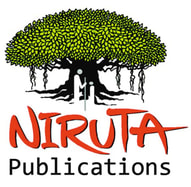
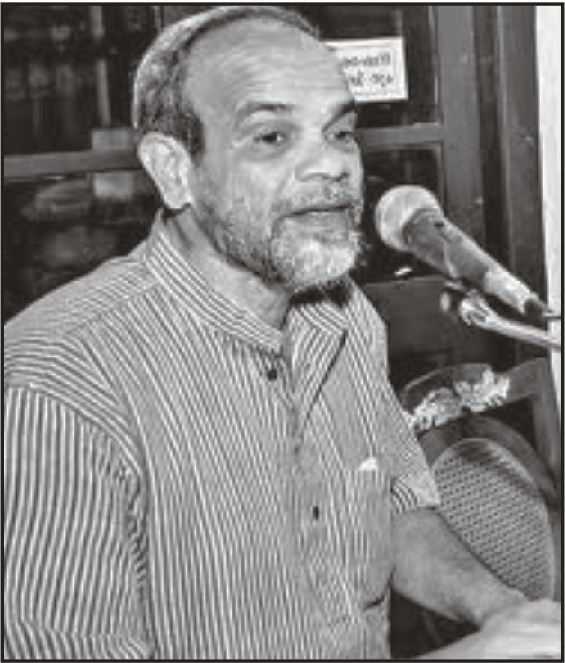
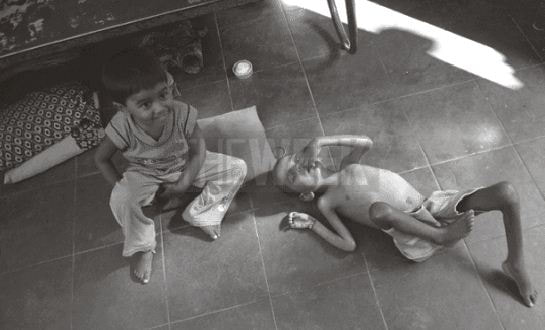
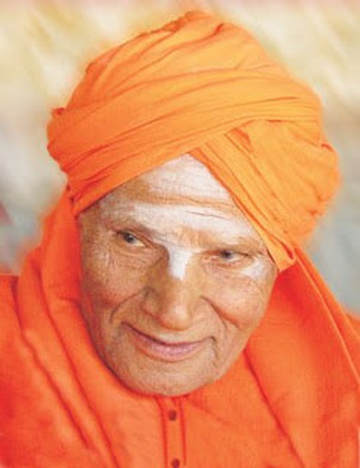
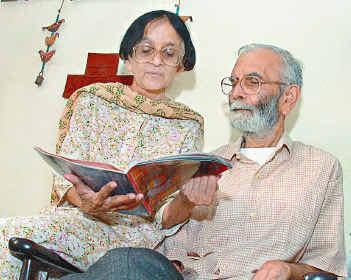


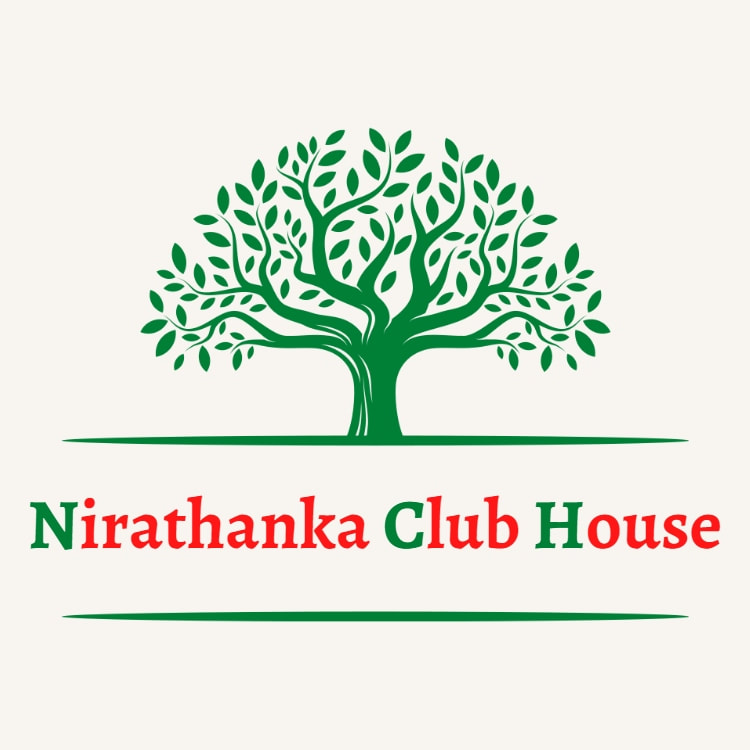


 RSS Feed
RSS Feed





